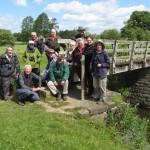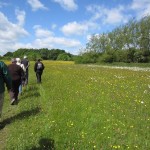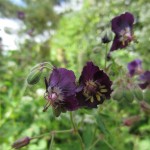This month’s walk will most likely be remembered as one of the best for many years. A party of 14 set off along the West Bank to the River Amber in bright sunshine and a fresh to strong breeze, with regular leader Paul Beard intent on regaling us with the delights of the recent club trip to Scotland. Everyone will have their own ‘best’ sighting from the walk, but the highlights included great views of Red Kite, Kingfisher, Common Tern, Little Egret, and the 2015 Enterprise Masters Championship.
Fifty bird species made it onto the list: Blackbird, Blackcap, Black-headed Gull, Blue Tit, Bullfinch, Canada Goose, Carrion Crow, Chaffinch, Chiffchaff, Common Buzzard, Common Kestrel, Common Tern, Coot, Cormorant, Dunnock, Goldfinch, Great Crested Grebe, Great Spotted Woodpecker, Great Tit, Greenfinch, Grey Heron, Greylag Goose and goslings, House Martin, House Sparrow, Jackdaw, Lapwing, Little Egret, Little Ringed Plover, Long-tailed Tit, Kingfisher, Magpie, Mallard, Mistle Thrush, Mute Swan, Nuthatch, Pied Wagtail, Red Kite, Robin, Sand Martin, Sedge Warbler, Skylark, Stock Dove, Swallow, Swift, Tufted Duck, Whitethroat, Willow Warbler, Woodpigeon, Wren, Yellowhammer.
Whilst the strong wind might have been an ideal test for the sailing Masters – with fine displays of ‘planing’ and even a few capsizes – it was even more of a challenge for the butterflies; just one of each of Orange-tip, Red Admiral and Speckled Wood were seen, along with a handful of unidentified whites in the distance.
For those who asked about a wine-coloured flower growing in the verge near Bottom Farm, where we turned off the road to head for the river, this was Dusky Cranesbill Geranium phaeum. A native of France and Germany, it is now an established garden escape in Britain but is still very rare in the wild in Derbyshire, being recorded in just 12 out of 771 tetrads (2x2km squares) since 1987 (data from The Flora of Derbyshire, A Willmot and N Moyes, Pisces Publications 2015).
- ‘Groupie’ at the Bridge Over the River Amber
- Through the wild flower meadow
- Dusky Cranesbill



